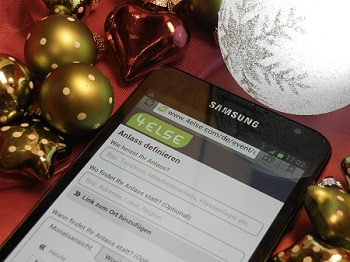In the UK, consumers are most likely to indulge in online shopping on Christmas Day. In 2017, traffic to online retailer websites on Christmas Day was almost double (45%) the December monthly average. Three days before New Year’s Eve (28 December) purchases were more than a quarter (26%) up on the December average.
According to RTB House data, in the second half of December, roughly three days before Christmas, the frequency of online consumer visits to online retail websites steadily decreases and reaches its lowest level on Christmas Eve. On this day, user visits to online retailer websites are roughly 24% lower than the average in December. Furthermore, consumer purchases are almost two-thirds (60%) down on the monthly average.
RTB House, a global company providing state-of-the-art retargeting technology based on deep learning for top advertisers, analysed online consumer behavior in December – one of the biggest online shopping periods of the year. This analysis was carried out using aggregated campaign data from EMEA, the US, APAC, and Latin America.
Globally, in December, online consumers are most likely to visit online stores and close transactions two weeks before Christmas Eve. For example, the highest point of the online Christmas shopping spree occurred on December 12 last year, when consumers visited online shops 19% more often than the monthly average for December, and purchases rose 50% above the monthly average.
According to RTB House data, in the second half of December, roughly one week before Christmas, the frequency of visits to online retailer websites steadily decreases and reaches the lowest level on Christmas Eve. On this day, users visit stores nearly 23% less than the average in December. The number of transactions is also lower than the average for this month by almost 56%.
“It seems that in December online shoppers buy more in first half of the month, but not at the last moment. Rather, consumers prefer to make last minute purchases on the high street.” – says Artur Jaworski, Business Director, UK, RTB House. “Retailers with an online and offline presence need to keep this in mind and plan their marketing activity to retain consumer engagement both on and offline and capitalize on the seasonal sales boost.
The holiday season is also a great opportunity to reach through personalized retargeting customers who have visited your store a few weeks ago and have not yet made a purchase Long-term customer acquisition and the cultivation of repeat buyers is the ultimate goal for most marketers. Retailers need to retain budget to target recently active shoppers. There’s an increased urgency right after Christmas Eve, and last-minute shoppers are lucrative to retailers who are able to convert them.”
The number of the visits to online retail websites, and the number of purchases begins to rise incrementally after Christmas Eve. For example, on December 27 the consumers visit online retail websites 3% more often than the monthly average and bought over 3% more than December’s average. Those are the highest numbers right after Christmas Eve.
“The growing number of visitors and purchases after Christmas relates to the beginning of the New Year’s sales period, which is another hot online shopping period. Therefore, marketers need to plan carefully and use personalised retargeting to capitalize on continued consumer trends from the pre-Christmas build up. With AI technology and deep learning algorithms driving retargeting, marketers can display creatives with the most desired products for each individual customer” – adds Jaworski.

